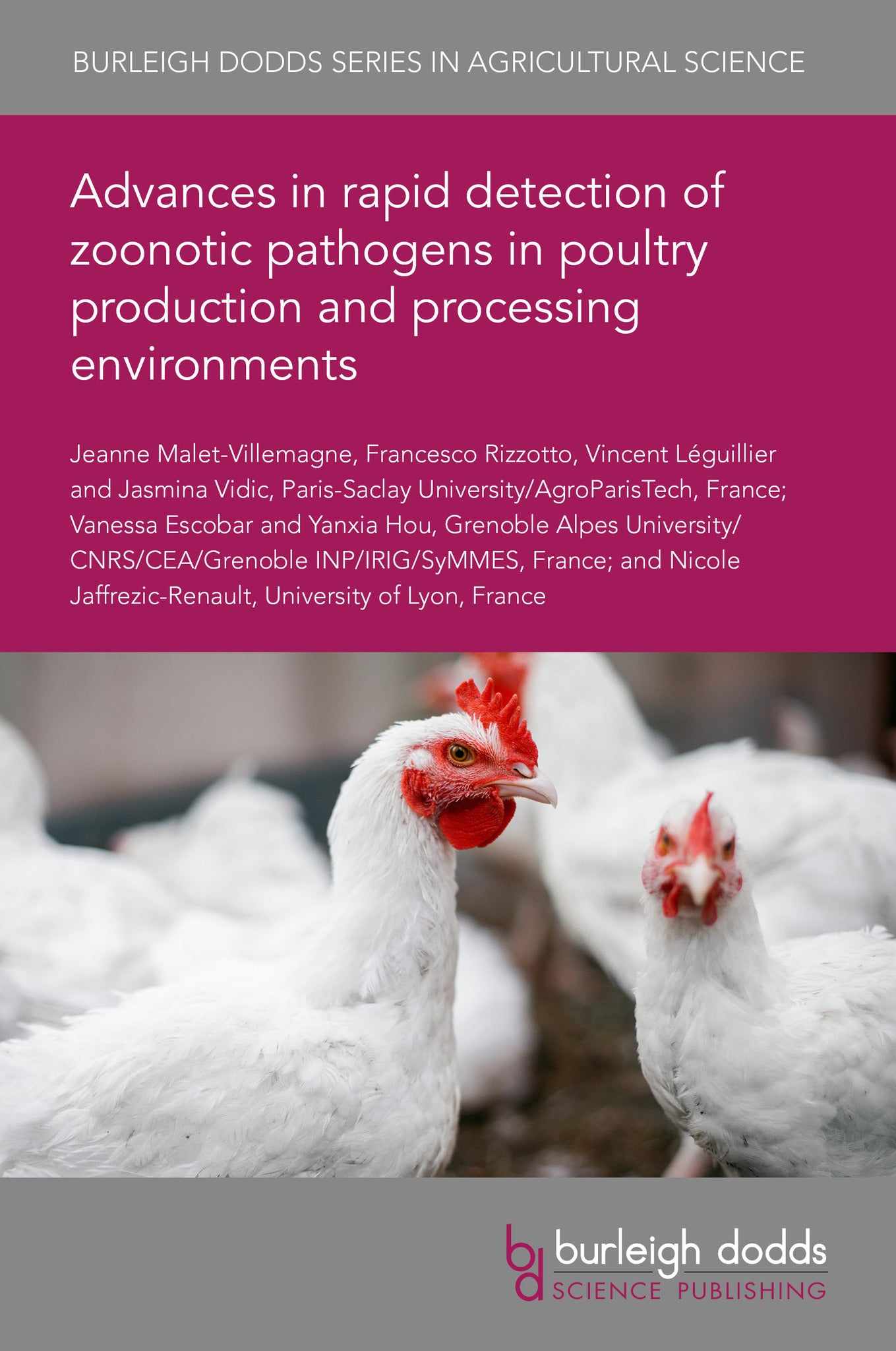We're sorry. An error has occurred
Please cancel or retry.
Advances in rapid detection of zoonotic pathogens in poultry production and processing environments

Some error occured while loading the Quick View. Please close the Quick View and try reloading the page.
Couldn't load pickup availability
- Format:
-
09 April 2025

In recent years poultry meat and egg consumption has seen an exponential increase worldwide. There is therefore a strong demand for ensuring the microbiological safety of poultry products. The main pathogenic bacteria in poultry meat and eggs are Staphylococcus aureus, Campylobacter spp., Listeria monocytogenes and Salmonella spp. These pathogens are able to adapt to and survive in poultry processing environments. Acceptable bacterial concentrations in poultry products are defined by health agencies. Sampling and detection methods are then developed for microbiological control. PCR, RT-PCR and immunoassays have now replaced culturing methods. Research has focused on the development of high-throughput and low-cost methods through analytical microdevices based on biosensors with short response times for on-site use and with low detection limits. This chapter describes newly-developed optical and electrochemical biosensors for rapid detection of foodborne pathogens in poultry.

TECHNOLOGY & ENGINEERING / Agriculture / Animal Husbandry, Poultry farming, TECHNOLOGY & ENGINEERING / Agriculture / Sustainable Agriculture, Sustainable agriculture

- 1 Introduction
- spp.,
- 2 Zoonotic pathogens in poultry: Salmonella spp., Campylobacter spp., Listeria monocytogenes and Staphylococcus aureus
- 3 Processing challenges: safe limits and sampling
- 4 Detecting bacteria: from culture-based techniques to molecular methods and biosensors
- 5 Optical biosensors: fluorescence, colorimetry, lateral flow, surface plasmon resonance and surfaceenhanced Raman spectroscopy
- 6 Electrochemical methods: immunosensors, aptasensors, genosensors and imprinted polymers
- 7 Conclusion and future trends
- 8 References



